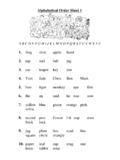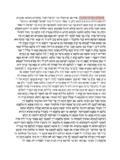Transcription of P a ce m a k ers fo r A n esth esio log ists M ad e In ...
1 1 Pacemakers for Anesthesiologists Made Incredibly Simple by Arthur Wallace, , April 2008 What do pacemakers do? a. Pace the heart b. Sense the heart How do you pace the heart? You send an electrical current to the heart. The current is small and it is measured in milliamps (ma). How do you sense the heart? The pacemaker measures the voltage produced by the heart when it contracts. The voltage is small, and is it measured in millivolts (mv). What is an electric current? An electric current is the flow of electrons. The pacemaker is a drug delivery device. The drug delivered is electrons. The current is the dose of electrons per second. A milliamp is a small current. When you start your car you use tens to hundreds of amps. The current the pacemaker is delivering is one thousandth as big as the current to start your car.
2 What is a voltage? Remember when you were in high school and there was a smart kid !"#$%&'$&(#)*+$+#,*-$*#'",*-.$/0&1"0(%$! #)2+$%&3$'",*-%$2,405$670$"&%$&$2#'$#8$9 #'0*', 201'rical voltage is the same thing. Voltage is the potential to do something. <'$+#0%*='$"&>0$'#$+#$&*3'",*-?$@ volts, or 12 volts, or some other voltage. It can just sit there waiting to do something. Current implies the delivery of electrons (the dose per second). Voltage is simply the potential of those electrons if you bothered to deliver them. The electron in the diagram The symbol for the ground is the little triangle with the line hooked to it. What is a ground? It is the earth. If you go outside your house to the power meter and you look at the ground near the power meter, there will be a bare copper wire that is screwed onto a copper post shoved in the ground.
3 Your house is attached electrically to the ground with this wire and metal post. This is essentially the sewer for spare electrons from your house. The ground is the electron dump. 2 So what is the big deal about this voltage C current stuff? @0($8(#E$9"3%,1%$12&%%$'"&'$HI<J?$@)'$@08#(0$!0$-#$#>0($F"E=%$G&!$20'$E0$E&40$'",%$120&(5$K#* ='$0>0($>,#2&'0$&$GLD$#8$9"3%,1%5$D"0*$3 #)$+#?$'"0$90*&2',es are severe. Physics theories - OK. Physics LAWs - +#*='$+#$,'5 Ohms Law: V=IR V: Voltage I: Current R: Resistance D"&'$'",%$2&!$%&3%$,%$'"&'$'"0$1)((0*'$+ 090*+%$#*$'"0$>#2'&-0$&*+$'"0$(0%,%'&*10 5$G0'=%$+#$a little experiment. Here are two plugs. I attach wires to a patient, like ECG leads. I hook the wires to the ground of two separate electrical plugs. Can I hurt the patient with this set up?))))))
4 G0'=%$E&40$&*$&%%)E9',#*5$/"0$-(#)*+$#*$ '"0$208'$,%$*#'$(0&223$M5$<'$is at, say, volts. L*+$'"0$-(#)*+$#*$'"0$(,-"'$,%$%2,-"'23$+,880(0*'?$20'=%$%&3$M5N$>#2'%5$/"&'=%$9(0''3$12#%0$'#$O0(#5$P#)*+ %$8,*0?$(,-"'.$/"0$(0%,%'&*10$#8$#)($!,( 0%$!,22$@0$2#!5$G0'=%$E&40$'"0$E&'"$easy and say we purchase really, really good wire with a resistance of 0 ohms. G0'=%$'&40$F"E=%$G&!Q$H$I$<J5$$D0$(0&((& *-0$,'$'#$E&40$<$I$HRJ RVVI21 Potential Electron Ground Voltage Ground Left Plug GND = V Right Plug GND = V 3 Remember that something divided by zero is infinity. And infinity is a very, very big number. When infinity is the current sent through your body, strange things happen, like smoke, charring, burns, and ultimately transfer to the eternal care unit. This is called a ground loop.)))))))))
5 The electrical equipment in your operating room is specially designed to prevent ground loops. For example, none of the ECG wires that you hook to patients is really connected to the wall. They are electrically isolated from the power in the wall. The wall power is electrically isolated from the electric company. The electricity in the OR is Special ED Electricity to prevent this type of injury. But when you put a wire on a ECG: Ok, so what is that? It is a plot of Voltage on the Vertical axis (vertical is up and down) and time on the Horizontal axis (left and right). What is that little box on the far left? How big is that? First, the units. The little box is measured in millivolts. It is 1 millivolt (1 mv) high. So the QRS complexes are approximately 1 millivolt in amplitude (height).
6 Special ED Electricity and the OR Electrical Isolation is designed to make it more difficult to burn, electrocute, or incinerate stuff (patients) in the OR. Do not attempt to bypass the special systems or electrical isolation monitors or checking done by bioengineering. The ECG wires are not physically connected to the monitor. They are optically isolated from the monitor, which means they send a light signal, h (photons), to the monitor. The 0201'(#*%$8(#E$'"0$9#!0($1#E9&*3$1&*='$- 0'$,*'#$'"0$9&',0*'$'"(#)-"$'"0$E#*,'#(5 Monitor ECG HTime Voltage 1 mv 4 If I tell you that the heart rate is 60 beats a minute, how many seconds is it between beats? UE?$)E?$!022$VM$+,>,+0+$@3$VM$!#)2+$@0$W X$A0%?$'"&'=%$(,-"'5$<'$,%$#*0$%01#*+$@0 '!00*$heart beats if the heart rate is 60.)))
7 Ok, so the R-R interval, the time between QRS complexes, is 1 second if the heart rate is 60. How many milliseconds is that? Correct, 1000 milliseconds is equal to 1 second. Now, how long is the PR interval? Less than 200 milliseconds if the patient does not have first degree heart block. How long is the QT interval? Right, it is approximately 400 milliseconds. How does the pacemaker detect an R wave? It detects the baseline. Then it sets a level, a voltage level above which it says there is an R wave. If the voltage of the ECG exceeds that level, it is an R wave. Normally this voltage level would be called a threshold. The 9(#@20E$,%$'"0$!#(+$6'"(0%"#2+:$,%$(0%0( >0+$,*$9&10E&40($'0(E,*#2#-3$8#($'"0$E,* ,E)E$current to pace the atrium or ventricle. So, the term THRESHOLD is a current.)))))))
8 It refers to the minimum current to pace the >0*'(,1205$A#)$1&*='$)%0$'"0$!#(+$/7J;P7 FGK$'#$describe this voltage level. So in pacemaker lingo, the word SENSITIVITY is used. SENSITIVITY is the voltage level that must be exceeded to detect an R wave or a P wave. Time Voltage (mv) mv (one millivolt) R-R Interval 1000 msec (1000 millisecond) PR Interval 200 msec QT Interval 400 msec 5 Now here is a little problem. You have a patient with a pacemaker. The pacemaker is not detecting the R waves. You decide to make the pacemaker MORE sensitive, so that it will detect the R waves. What do you do? You lower the SENSITIVITY in millivolts, to make the pacemaker MORE sensitive. Should I say that again? It makes sense if you think about it in voltages. To make the pacemaker more sensitive, LOWER the voltage of the SENSITIVITY.
9 How do I detect a P wave? Same concept. Establish a baseline. Determine a level called '"0$L'(, YP</<H</A5$<8$'"0$>#2'&-0$0Z100+%$'"0$20>02?$,'$,%$&$[$!&>0 .$Y#?$'"&'$!#*='$work, because there are also T waves. What do I do about the T waves? Find an R wave, wait a refractory period, and the next thing along is a P wave. R R R R R R R R R R R R R R R R Baseline Voltage Voltage Level Above Which It Decides there is an R wave ( SENSITIVITY (mv) ) Before: Not Sensing R Waves, Make it MORE sensitive to R waves. After: Sensing R Waves, because SENSITIVITY in millivolts was lowered. R R R R R R R R R R R R R R R R 6 That works. Now, what is that smudge on the ECG above? Am I a spaz? Or just a lousy artist? What is that smudge? The ugly smudge is noise: Electrical Noise.)]
10 In the OR, the noise is usually from the electrocautery, also known as the bovie. What does the pacemaker do when it sees electrical noise such as the bovie? The pacemaker is inhibited by electrocautery (the bovie). The pacemaker measures voltages. It thinks that smudge is electrical activity from the heart. When it detects electrical activity from the heart, it is programmed to NOT PACE. The word INHIBITED in pacemaker land has nothing to do with the sexual proclivities or abilities of the pacemaker. The word INHIBITED in pacemaker lingo means, DOES NOT PACE. If the pacemaker is INHIBITED it just sits there doing nothing. The word inhibited does NOT imply that the pacemaker can inhibit the heart. The pacemaker paces. The pacemaker does not inhibit. The pacemaker can only make the heart go FASTER.

![Q¤k ¤n hCr] ©jh ¦J¨n©v ,«skIT r§ ¤p¥x v¤z t gª©JIvh …](/cache/preview/4/e/b/7/d/4/a/b/thumb-4eb7d4ab2cc4baf7b7aacb5cd2d054e5.jpg)




